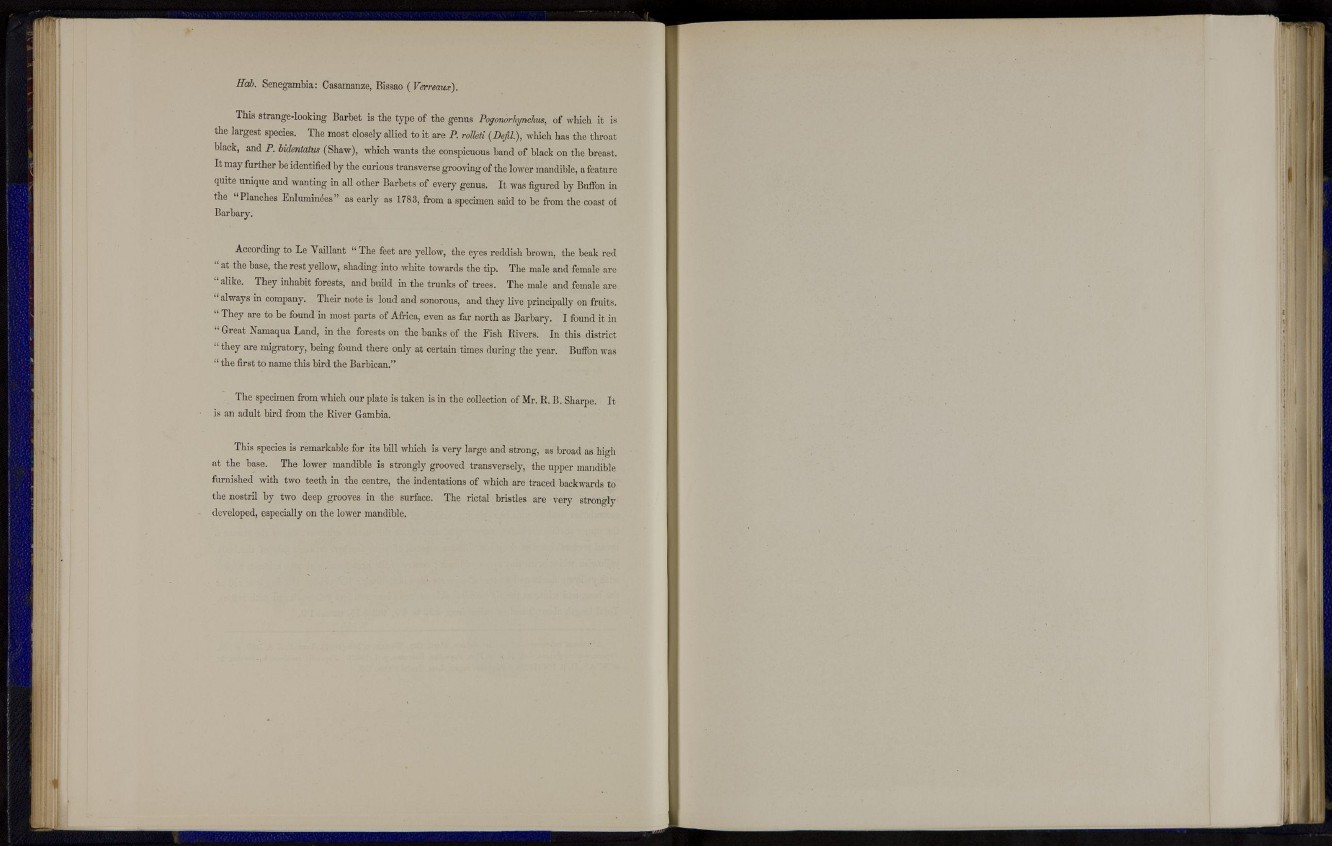
Hah. Senegambia: Casamanze, Bissao ( Verreaux).
This strange-looking Barbet is the type of the genus Pogonorkynchus, of which it is
the largest species. The most closely allied t o i t are P. rolleti (Defil.), which has t h e throat
black, and P. bidentatus (Shaw), which wants the conspicuous band of black on the breast.
I t may further be identified by t h e curious transverse grooving of the lower mandible, a feature
quite unique and wanting in all other Barbets of every genus. It was figured by Buffon in
the "Planches Enluminees" as early as 1783, from a specimen said to be from the coast of
Barbary.
According t o Le Vaillant " The feet are yellow, the eyes reddish brown, the beak red
" at the base, t h e rest yellow, shading into white towards the tip. The male and female are
" alike. They inhabit forests, and build in t h e t r u n k s of trees. The male and female are
" always in company. Their note is loud and sonorous, and they live principally on fruits.
" They are t o b e found in most p a r t s of Africa, even as far north as Barbary. I found i t in
" Great Namaqua Land, in the forests on the banks of the Fish Rivers. In this district
" t h e y are migratory, being found there only at certain times during the year. Buffon was
" the first t o name tins b i rd the Barbican."
The specimen from which our plate is taken is in the collection of Mr. R. B. Sharpe. It
is an adult bird from the River Gambia.
This species is remarkable for its bill which is very large and strong, as broad as high
at the base. The lower mandible is strongly grooved transversely, the upper mandible
furnished with two teeth in the centre, the indentations of which are traced backwards to
the nostril by two deep grooves in the surface. The rictal bristles are very strongly
developed, especially on the lower mandible.